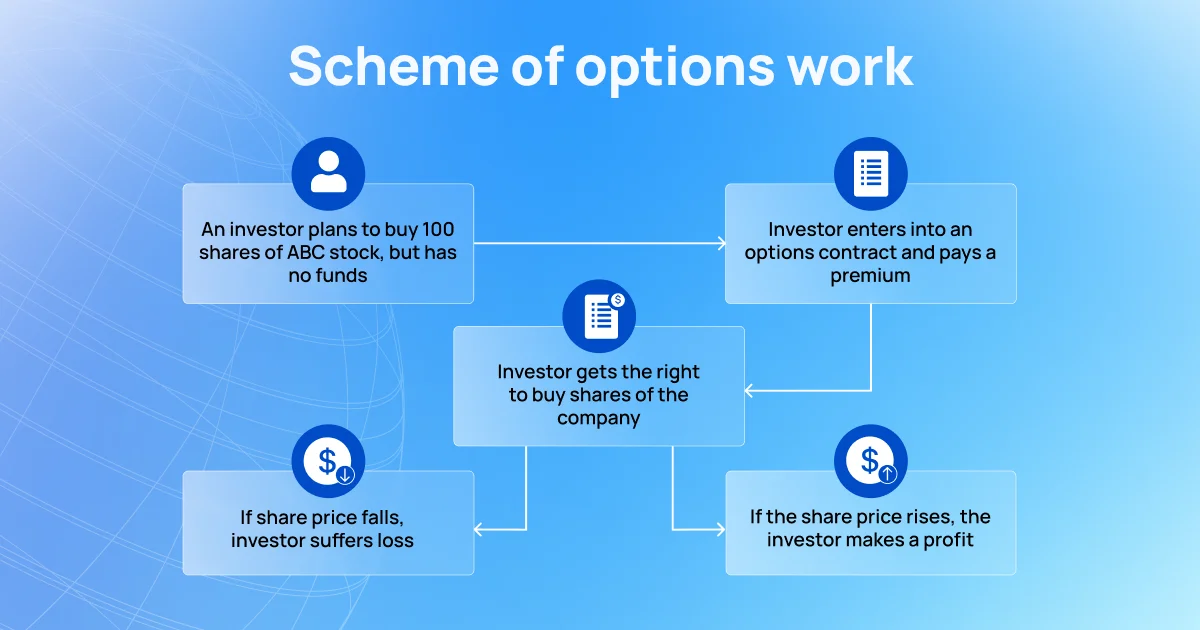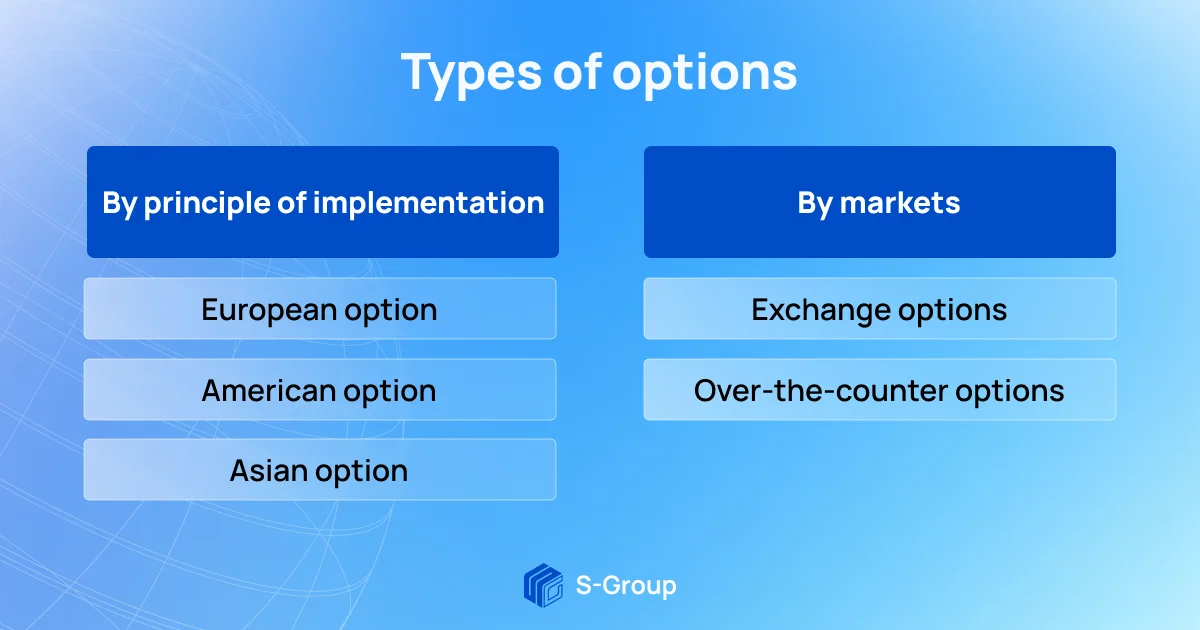What are options and how do they work?

Options are a type of derivative that allows investors to hedge against losses and make money on any market movements. What are options, and how do they work? Keep reading to find out the answers to these questions.
Options: definition and what they are used for
An option is a security, under the terms of which an agreement is made between a buyer and a seller to buy or sell an underlying asset at a certain time at a predetermined price. The underlying asset can be stocks, commodities, currencies, etc. And the subject of trading in options is not the asset, but the right to sell or buy it.
Options are used to hedge risks and make speculative profits. The goal of the sellers is to make money on its sale. They calculate the premium stipulated in the option, and the buyer receives it in return for the right to buy or sell the underlying asset. The amount of the premium includes the risk of an unfavorable change in the price of the underlying asset for the buyer.

All option contracts are sold for a consideration (premium). The contract defines a specific transaction price, and a deadline for the exchange. This deadline is the last time an option contract can be exercised. Typical option contracts are valid for 30, 60 or 90 days, but some may have an expiration date of up to a year.
The further away from the expiration date of the option contract, the higher the premium will be. This is because a longer expiration period provides a greater likelihood that the price of the underlying stock can change in the right direction so that the buyer of the contract can make a profit.
In options trading, the seller and the buyer have competing interests because one side believes that the price of the underlying asset will rise, while the other bets on the price to fall. In the end, only one side makes a profit.
Let us consider an example.
Investor A assumes that ABC stock will rise in three weeks. Right now the price per share is $10. The options are sold in groups of 100 shares. That is, the investor needs $1000 to buy the stock, but he does not have that kind of money right now. In this case, the investor enters into an options contract, pays a premium of $30 and gets the right to buy shares of ABC stock at $10 apiece.
- If the company's stock falls or remains at the same level, the investor will not complete the transaction and will suffer a loss equal to the premium paid.
- If the stock price rises to $20 apiece, the investor will complete the transaction and buy the stock at $10. This way he will be able to make $700 on reselling the shares.

How to trade options: put & call
Option contracts are divided into two types: call options and put options.
A call option gives the buyer the right to buy an asset at a specified time at a price fixed in the contract. The option holder (buyer) may either use this right or ignore it, but then he will suffer losses in the amount of the premium. For the buyer to be able to exercise his right and buy the asset, the price of the asset must be higher than the fixed price.
- If, at the time of closing the contract, the price of the asset is higher — such option is called “in the money”. In this case, the buyer makes a profit and the seller makes a loss.
- If, at the time of closing the contract, the price of the asset is lower — such option is called “out of the money”. In this case, the buyer suffers a loss in the amount of the premium paid, and the seller makes a profit.
A put option gives the right to sell the underlying asset at a certain date at a previously fixed price. Traders buy put options when they feel the price of the underlying asset will fall and sell when they feel the price will rise.
Types of Options
Options are classified into two categories: by principle of exercise and by markets of circulation.

Types according to the principle of exercise
- European option. Redeemed only on the date specified in the contract. That is, not a day earlier.
- American option. Redeemable on any day prior to expiration.
- Asian option. The strike price is based on the average value of the underlying asset over a certain period of time.
Types by market of circulation
- Exchange options. Traded on an exchange.
- Over-the-counter options. Traded over-the-counter.
Advantages and Risks of Option Trading
Before trading options, it is important for an investor to understand the benefits and risks of such trading.
Advantages of Option Trading
- Buying an option means gaining control over more shares than if you bought the stock outright for the same amount.
- Options are a form of leverage offering increased profits.
- An option gives the investor time to see how things develop.
- An option protects investors from downside risk by fixing the price without an obligation to buy.
But there are risks as well, namely
- You can lose your entire investment in a relatively short period.
- This can be much more complicated than buying stocks — you have to understand what you're doing.
- With options trading, you can lose more than your initial investment.
Is options trading right for you?

Options trading is an advanced strategy most often used by experienced investors. Buying and selling options at a profit requires a lot of research and a deep understanding of your stock positions. If you don't want to make that kind of commitment as an investor, “buy and hold” investing may be the best approach to accumulating wealth for you.
Share
Interesting
Would you like to receive a digest of articles?
One email with the best articles of the week.
Sign up so you don't miss anything.